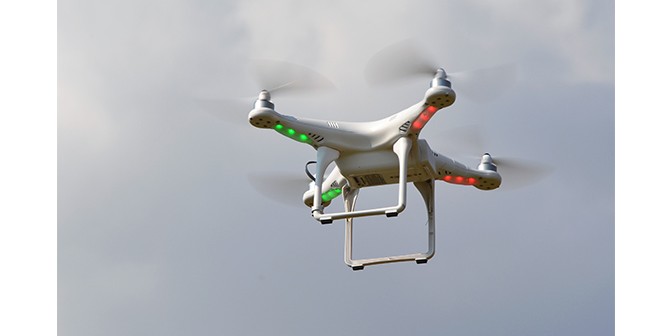A Legal Layman’s Summary of Current Property Rights, Privacy Issues and Regulation.
My company here in Bend recently received an FAA exemption to operate a small unmanned aerial vehicle (UAV) for commercial purposes. This exemption exists as a temporary path to legal commercial UAV operation until the FAA finalizes their overdue UAV policy, mandated for September 2015. In the interests of operating legally and safely, I’ve been researching and tracking the issues surrounding UAVs, the FAA, navigable airspace, and private property for a couple of years now. I’m not a lawyer, but I would like to share what I’ve found.
Private property: the vertical extent of private property rights was a question last tackled by the Supreme Court in United States v. Causby in 1946. The Court held that private property extends at least 83 feet over the maximum usable height of the property. I wish I could be more specific, but that’s the extent of federal legal precedent at the moment. For example, in a residential zone with maximum allowable building heights of 45’, private property extends at least 45’ + 83’, or 128’ vertically from the surface.Trespassing in private airspace with a UAV, commercial or otherwise, is the legal equivalent to any other form of trespassing.
Privacy: There is no special “overhead” provision in federal law for a reasonable expectation of privacy, just the normal protections that are associated with the boundaries of private property. This is why things like manned aerial photography, Google Earth, and Google Street view are legal.Additional privacy rights in Oregon are described in House Bill 2710, which primarily addresses law enforcement use of UAVs but does provide a civil remedy against any UAV operator that repeatedly flies lower than 400’ over private property.
Navigable airspace: The FAA holds jurisdiction over “navigable airspace”, which is normally 500’ and higher above ground surface except near airports, helicopter pads, or other areas where aircraft need to transition from the surface to above 500’. The FAA also specifically claims jurisdiction over “everywhere” where aircraft may present a hazard to people or property on the ground, including helicopter flights below 500’ [14 CFR 1-F §91.119]. However, the FAA makes a distinction at aircraft like ultralights and lighter-than-air vehicles, and does not consider manned ultralight aircraft to present a hazard under 500’, leaving non-commercial use of ultralights very lightly regulated. It stands to reason that, absent other regulation, UAVs under 55 lbs with neither fuel nor people aboard would be considered at worsta “hazard” equivalent to that of ultralights. This calls into question whether the FAA currently has jurisdiction over small commercial UAVs outside of “navigable airspace” above 500’, as their “everywhere” assertion appears to be invalid in cases where the aircraft does not present a “hazard” while operating under 500’. The question of “hazard” and “everywhere” can lead to some absurd logical arguments, such as the FAA regulating Frisbees, footballs, and paper airplanes. There’s another current lawsuit claiming that the FAA cannot enact any regulation of aircraft under 55 lbs at all. It’s important to note that issues of privacy and FAA jurisdiction are being debated in court at the time of this writing and could be altered in the near future.
I won’t bore you with the specific restrictions imposed by our 333 exemption, but they are substantial and far more restrictive than the above conditions. Any company or individual with a 333, and a description of their operational requirements, are available to be researched in detail at the FAA 333 Exemptions web page. In addition, there are state and local laws and ordinances such as no-fly areas at Old Mill, Smith Rock, and the Columbia River Gorge, and temporary restrictions such as those reserved for wildland firefighting. My company needs to be aware of and observe all these regulations to ensure safety for other aircraft, respect private property, and avoid the risk of substantial legal and business consequences.
Commercial UAV operators are required to license their vehicles as commercial aircraft, thus commercial UAVs have the same responsibilities and protections as any other commercial aircraft. Attempting to disable or harm a commercial aircraft during legal operation carries considerable federal penalties.
I’ve tried to avoid the word drone, as the popular use of it describes everything from a Predator to a palm-sized RC toy and isn’t useful for technical discussions. UAV is now a common term for an unmanned aerial vehicle with autonomous capabilities, and “small” UAV describes such a vehicle under 55 lbs. Unmanned aerial system (UAS) describes an entire system, from aircraft to pilot to post-processing.Remotely piloted aircraft (RPA) seems to be an up-and-coming replacement for UAV as it implies human operation and is broad enough to encompass everything from bus-sized military systems to small RC airplanes and quadcopters that are at most semi-autonomous.
While this isn’t a comprehensive list of every issue surrounding unmanned aerial vehicles, I hope it helps fill in some blanks on the current state of affairs.
Justin Healy, Real Geographics, www.realgeog.com





